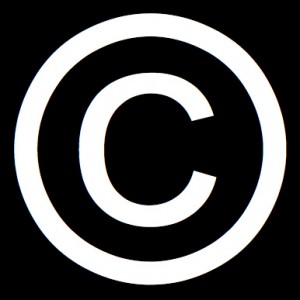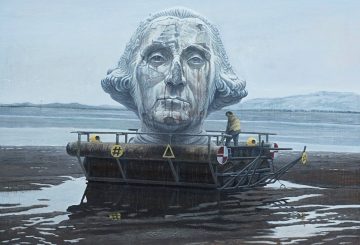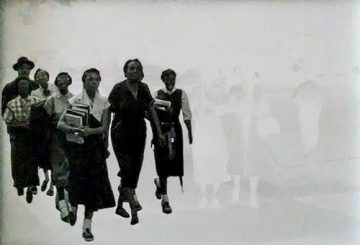Sharne Wolff takes a hard look at the fine print of social media’s latest darling...
One day a few years ago I was walking down King Street, Newtown when a guy stepped out of a shop wearing a T-shirt bearing an image of one of Michael Zavros’s amazing ‘falling horses’. For the princely sum of $49.95 I could have bought one too. In those days, that’s about as bad as it got for artists. A quick call to the culprit manufacturer threatening legal action was more than likely to solve the problem and all that was necessary to prevent further copyright infringement of a work of art (although I’m not sure what happened, if anything, in that case). But things are changing – and fast.
Copyright is a very simple form of protection for owners. Apart from a few specific rules relating to photographs, employees and commissions, in most cases the artist will be the owner. Owners don’t have to do anything to register for copyright – so it’s ‘free’ and it applies automatically to anything that is an original ‘artistic work’. This description covers paintings, drawings, cartoons, sculpture, craftwork, architectural plans, buildings, photographs and maps. Under other headings copyright also covers music, lyrics, sound recordings and videos. As most people know, the copying of artworks new enough to be protected by copyright legislation without permission is illegal. In Australia, the period of protection is usually the life of the artist plus 70 years. Copyright owners also have certain ‘moral rights’ – to be attributed as the artist, and to prevent their work being used in derogatory or offensive ways. The rights granted to the owner to prevent copying include the right to prevent the publishing or communication of the work. Except in a few circumstances (for example ‘fair dealing’ for review purposes) this means that the uploading of your work onto the internet without your permission will also most likely infringe copyright – at least under Australian law.
Why should you care if someone infringes your copyright? I guess it all depends on the artist. After all, as Granny used to say, ‘copying is the greatest form of flattery’. Some artists I speak to are happy enough. Others don’t like it at all. I know Banksy doesn’t like it. He says so on his website – along with his offer to quote on demand for auto resprays and his instructions for building a CCTV mobile to hang over your baby’s cot. Banksy says he doesn’t make ‘T shirts, mugs and stickers’. But in England (and possibly other places) you can buy all these things and a lot more covered with copies of his work for which he receives nothing – except perhaps more fame. T-shirts and coffee mugs, however, are really just the start of a whole new wave of image reproduction…
If you’re into social media you’re probably already heard about the new platform called ‘Pinterest’. ‘Pinterest lets you organize and share all the beautiful things you find on the web’. You might even be using it. A few galleries (Brenda May Gallery, Sydney and Short Street Gallery, Broome) and individual artists like Ben Quilty have already set up a Pinterest site. Pinterest took off in 2012 and has more than doubled its users in Australia in the first two months of 2012. The platform is of particular interest to artists because it’s visual and it’s all about images. It’s different to other platforms like Facebook, Twitter and Instagram because a lot of what’s posted there is either your own material (photos etc) or Youtube or Vimeo videos that are already in the public domain.
Unlike having that unique Zavros T shirt, the whole idea of Pinterest is to share images (or ‘Pins’) with friends and other Pinners. Some of the most popular images have already been shared (or ‘repinned’) more than 15,000 times. A cursory search last night and I found dozens of images on Pinterest by Michael Zavros, Sally Gabori, Victoria Reichelt, Petrina Hicks and Kirra Jamison. You may remember Petrina Hicks photographic work ‘Shenae and Jade 2005’ was featured in a post on The Art Life’s Local Schmocal a couple of weeks ago. It’s also on Pinterest with the label ‘girl eating budgie’ on a Board with a bunch of bird images. No mention of the artist’s name. Marina Strocchi’s image ‘The Homeland 2008’ is another popular Pin. It’s been repinned at least 2 dozen times. Sometimes the artist is named, a couple of times Michael Reid is listed as the artist, and on another occasion it’s been repinned with the title ‘love this Australian textile’. Kirra Jamison has an image repinned as ‘yup- I like owls’. I’m guessing that’s not its real title and her name is nowhere to be seen.
So far as Pinning goes, once you’ve been granted your account at Pinterest it’s dead easy. A three year old could take pictures from Google images or any website and pin them on their ‘Board’. If a Pinner is doing the right thing, they are required to ask permission to use images or to only use images that are freely available. I did a little experiment on my own Board. I used the Pinterest Pin to upload images by Ben Quilty and Michael Zavros from Google images. A box popped up. It asked me to name them. I called one ‘drawing of a car’ and the other ‘half man half horse’. They uploaded onto my Board with no other titles or the name of the artist. The source was shown as google.com.
So what about the copyright you say?
A couple of weeks ago a Canadian photographer (who is also a lawyer) wrote an article about Pinterest terms and conditions. The article went viral. The photographer decided that she had to take all her images off her Pinterest site because of the way their terms and conditions placed the responsibility on the ‘Pinner’ to obtain permission to pin a work. The article also brought global attention to the copyright issues. Since then Pinterest has changed its terms and conditions relating to intellectual property. It’s even provided a piece of code for owners to attach to their websites to try to prevent illegal Pinning. A downloadable form is provided for copyright owners to complain about infringements and Pinterest states that it will ‘terminate the accounts of users who repeatedly infringe or are repeatedly charged with infringing the copyrights or other intellectual property rights of others’. Artists and website owners can also take matters into their own hands by making it difficult to download or pin images, using a ‘No Pinterest’ badge on their site, using watermarks on images, embedding image titles, avoiding descriptive image titles and using moving or poor quality images on their websites (both of which defeat the original purpose). It remains to be seen whether any of these deterrents work over the long term and Pinterest has copped criticism for not doing more to prevent infringements of copyright on its site or to educate Pinners properly. This grumbling may well become louder when (or if) there’s money to be made from Pinning.
Copyright laws rely on enforcement to make them work. Enforcement takes time and money. You can check the source of a Pin by using a ‘finder’ URL http://pinterest.com/source/[yourwebsiteaddress]/ and alert the infringer about any breaches of copyright but this only works if the image has been taken from your own (or the gallery) website and google images already contains thousands of unattributed images. You can google your own name or set up a Google alert that tells you when your name has been used. What happens if your name is Tom Wolff (like my son) and you get 11.5 million hits? And how is it possible to search every element in your work? Will Danie Mellor be prepared to trawl every ‘blue and white’ themed Pinterest Board to check if anyone has pinned an image of one of his drawings?
Obviously if you’re an artist who is upset by the idea of someone distributing your work all over the cyberworld, you have the option to take all your work off the internet. That certainly isn’t the solution in the current art market. Perhaps in the end it’s just better to look on the bright side. If you embrace the idea it might be your image that makes the Pinterest popular list and is repinned a zillion times globally. Your work might even make it onto the pages of Italian Vanity Fair (Victoria Reichelt) or the gift list for an Indian wedding. The possibilities are endless.
This post is not intended to provide legal advice for artists or other readers. For legal advice about copyright issues you should visit a solicitor. Information about copyright and other intellectual property rights including free downloadable info sheets and articles can be found on the web at the following places: Australian Copyright Council www.copyright.org.au | Arts Law Centre of Australia www.artslaw.com.au | Copyright Agency Limited www.copyright.com.au




Dear Sharne,
Thank you for an excellent and informative article. Over the years, I’ve discovered a few of my images on various websites [and today one on Pinterest], but of course they are the ones which are attributed to me and are easy to find. It is an issue artists need to think about and be aware of.
Cheers,
Kathryn.
Pingback: To Pin & grin or copy right? « Wolff.
Really interesting article Sharne, particularly the copyright issues. There’s positives and negatives to having a Pinterest account but we think it’s a pretty good way for people to interact with our artists. We’ve been working around the problem of attribution by leaving a comment with all the artist’s details and hope that this also reinforces the importance of attributing an artist’s work in the public domain.